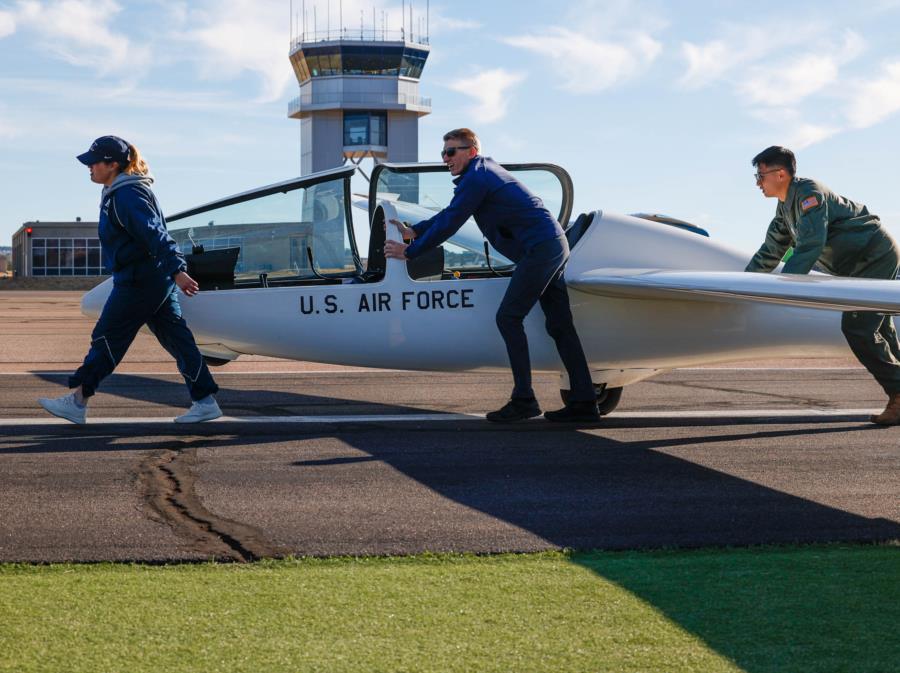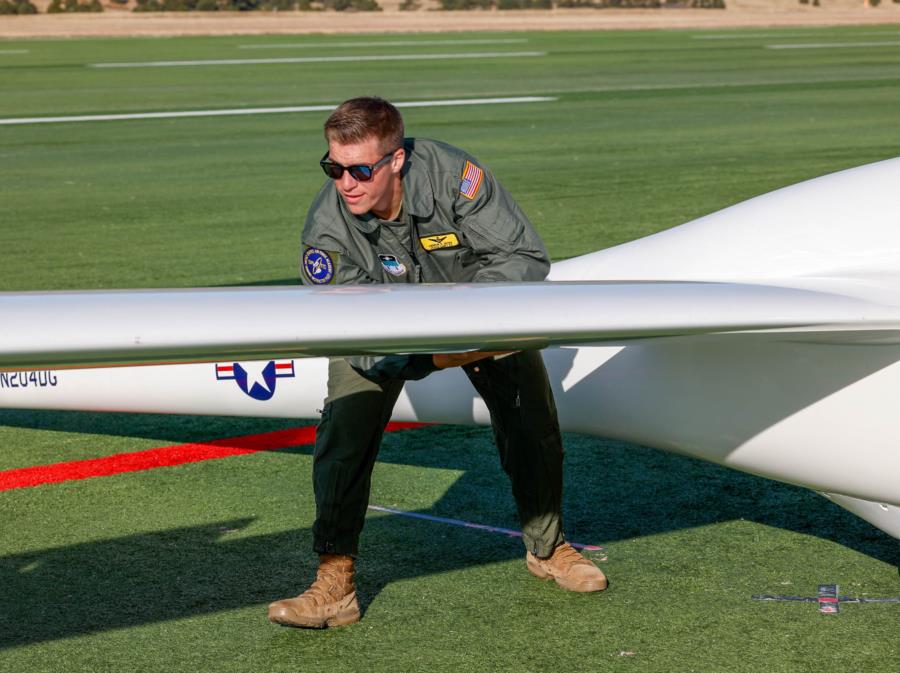Soaring AM-251
The weather was not cooperating last week for Soaring. It was windy with strong gusts coming off of the western mountains most of the week and Webguy was only able to capture T Day of Soaring AM-251.
During the summer before their third-class year, they can enroll in Basic Soaring (AM 251), which consists of 14 glider sorties with the opportunity for a solo flight (depending on proficiency). Approximately 330 cadets participate in the Basic Soaring Course. If cadets are unable to do it the summer of their third degree year, they can still be selected for fall or spring semester during the academic year. However, they will not have the opportunity to become soaring instructors.Basic Soaring graduates are eligible to apply to become Cadet Soaring Instructor Pilots (AM 461). Cadet Instructor Pilots conduct 95% of all glider flight instruction and go through a yearlong upgrade program during their third-class year to become Instructor Pilots (IPs). This earns them their G-Wings and the title of “Youngest IPs in the Air Force”. Some Cadet IP’s compete nationally in aerobatics and sailplane racing team competitions. The squadron operates 24 sailplanes (gliders) with 7 tow aircraft.


The 94th Flying Training Squadron conducts more than 20,000 training and competition glider sorties (flights) each year with the focus being on developing officers, leadership and character. There are also Instructors getting flights to keep current or doing upgrades. Most instructors are cadets, but there are also Active duty or Reserve that instruct as well.




The glider is inspected prior to flight and flight plans are discussed between Instructor and student.Students are seated in the front of the glider with the instructor directly behind them. Student and Instructor both have a full set of controls which allows for hands on learning and instruction.






Once the glider is positioned on the runway, the rope from the tow plane is connected to the glider. The rope is inspected by the student and IP and hand signals are used to let the student and IP know that the plane is hooked up properly and ready for takeoff.




There were some excellent landings on the synthetic landing field. The goal is to land as close as possible to where the gliders will take off from again, otherwise it is a long push to get it back to the runway. Sometimes the gator will come out and help tow them to their next location. The synthetic turf landing field is 430 feet wide and 3,000 feet long and is thought to be the largest single installation of synthetic turf in the world.






To view the photos from this Soaring AM 251 session, go to GALLERIES > Airmanship > Soaring. Set photo order Oldest to Newest and then select start page. Or click on the links below.
***Photo order must be set OLDEST to NEWEST for the links below to take you to the correct start page.
Soaring AM-251 2nd Fall Session pgs. 99(middle of page)-116 Soaring

